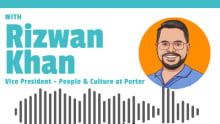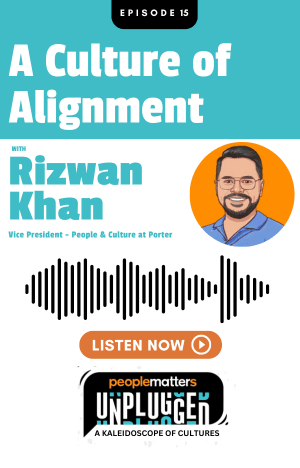Motivation comes from having deliverable outcomes: Eric Goh, Managing Director for Singapore, Dell Technologies

If people are to put forward their best foot in the workplace, they need strong positive motivation; and that arises from having a system that supports their performance through clarity and provides the tools they need to do their work.
People Matters asked Eric Goh, Vice President and Managing Director for Dell Technologies in Singapore, to share a bit about how Dell has been balancing performance expectations with employees' own needs over the last year and beyond. Here's what he said:
Last year's events forced many organizations to rethink their approach to productivity. What were your own productivity and performance takeaways from 2020?
2020 was an extraordinary year where I saw myself fully embracing the new virtual world. The shift to full-time remote work was an opportunity for me to develop new ways of working.
Firstly, technology is an important enabler. Using a variety of tools, I was able to maximize my performance, continue to collaborate online, attend virtual meetings, communicate with team members, and serve customers. Secondly, some work styles are better than others. For more than a decade, Dell Technologies has offered flexible work, which has helped all employees, including myself, find the work style that best fulfills our needs on the job and in life in a highly mobile, collaborative and flexible work setting. Thirdly, taking team engagement online helps maintain connection and boost productivity. According to our study on the remote work readiness of Singapore employees, a common challenge during remote work was a lack of team engagement activities. I was heartened that my team could creatively find ways to continue their interactions with one another through video calls, participation in virtual happy hours and coffee meet-ups, and virtual yoga sessions.
As a leader, what do you think works in organizational goal setting today? How does this translate down to goal setting for teams, and perhaps even for individuals?
Organizational goal setting must help the business grow and be relevant to employees so that they will be motivated to meet them.
The key to achieving these goals is to set deliverable outcomes so that employees are clear about what they are working towards.
That way, we can maximize team member engagement to build an environment that inspires the right attitude and create a culture of honesty and excellence in the workplace.
We have a well-defined process to understand each team member’s aspirations. For example, the Individual Development Plan is dedicated to providing our team members with an opportunity to steer their own growth and career progression. This ensures that managers are developing a career roadmap that helps employees feel fulfilled in their role, and contributes to the company’s growth.
What business-critical priorities and metrics have you and your team identified for this year? How are you communicating these down through the organization?
As a technology company, we’ve had a front-row seat to the overnight digital transformation and drastic changes to how we work. Our priority is to ensure that we continue to support our customers and provide the essential services they need, while also keeping our team members safe.
We have various initiatives and communication systems in place for employees to stay updated. For example, our leadership team hosts regular virtual townhalls and strategy cascade sessions at the start of every financial year to share business direction and updates. We have also created internal newsletters and employee advocacy systems for team members to engage with one another and share informative topics and content that can help support each other in their day-to-day work. These platforms help strengthen internal communications and ensure that the company’s overall business strategy and priorities are cascaded.
Given the shift to the virtual format, how in your view can productivity and performance be better assessed?
Moving online does not mean placing less emphasis on employee communication or engagement. It is more critical than ever that organizations ensure a robust system for employees to stay up-to-date on work policies, receive tips for staying healthy physically and mentally, and that gives them access to employee review portals.
Leaders of remote teams must also prioritize transparency and set performance expectations to ensure that employees feel connected and included to deliver to the expectations set.
Organizations have a responsibility to empower leaders with the right tools that can come in the form of leadership trainings and data-driven systems to help them monitor employee performance and provide feedback in a timely manner.
In this new era of remote work, what do you personally see as the driving factors that help maintain productivity?
I believe that productivity is related to outcomes, not location. It is important that our team members have the support and technology that allows them to work from anywhere at a time that suits them best.
The work we’ve done over the last several years to improve our team member experience and make our products configurable is proving to be business-critical. For example, we modernized our infrastructure for scale, speed, security and flexibility of access, and leveraged our multi-cloud environment. This helped us run our infrastructure more efficiently when it came to employees using remote access.
During this time, our team members have also found creative ways such as virtual happy hours and yoga sessions to stay connected and productive. It was also an opportunity for us to advance progress against our 2030 moonshot goals by reducing our carbon footprint and opening up new opportunities to bring in diverse talent no longer limited by physical location.
Going forward, I believe that organizations must seek to grow and evolve their employee engagement programs and invest in the right mix of technology and HR resources for an enriching remote work experience for the long term. The shift in working style demands a relook at policies and guidelines to incorporate training and flexibility, which are important for employees trying to manage their professional and personal lives.














